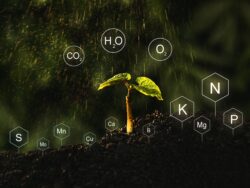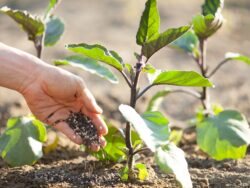Soil is one of the most valuable and fundamental natural resources for agriculture. It is not only the physical support that sustains plants, but also a complex system that regulates crop growth and development through its physical, chemical, and biological properties. In a world where the global population continues to increase and the demand for food grows, the role of soil in agriculture has never been more critical.

The Importance of Soil in Agriculture
Soil serves as the medium through which plants obtain essential nutrients, water, and oxygen for growth. Roots anchor in the soil, allowing them to access essential elements and minerals for development. This includes primary elements like nitrogen, phosphorus, and potassium, and secondary elements such as magnesium, iron, zinc, and boron. These nutrients are absorbed in specific amounts and at the right time to ensure uniform development.
Agricultural productivity is dependent on key factors such as soil pH, texture (the proportion of sand, silt, and clay depending on the crop type), and its ability to retain water. Soils that combine optimal pH levels, adequate structure, and sufficient organic matter provide the ideal environment for healthy crop growth.

Soil Fertility
Soil fertility refers to its ability to provide plants with the necessary nutrients for growth. Fertile soils are essential for achieving high agricultural yields. This can be achieved through the proper use of organic fertilizers, agricultural biostimulants, and farming techniques that promote soil nutrient conservation and regeneration.

Excessive use of chemicals can lead to problems such as soil acidification, contamination of nearby water sources, and loss of biodiversity. This is why practices such as sustainable farming, crop rotation, and the use of organic fertilizers or agricultural biostimulants have become essential to mitigate these issues, gaining significant importance in recent decades.
Soil and Agricultural Biodiversity
Soil hosts an impressive diversity of microorganisms and animals essential for fertility and ecological balance. Organisms such as bacteria, fungi, and annelids break down organic matter, enriching the soil with nutrients and improving its structure, water circulation, and aeration.
Soil biodiversity also plays a crucial role in the fight against pests and diseases. For example, certain types of fungi can combat a wide variety of pests, minimizing the need for chemical pesticides.
Similar to beneficial microorganisms, the use of organic alternatives, such as neem oil, is recommended for enhanced pest protection and control.

Challenges in Soil Conservation
Although soil is a renewable resource, its regenerative capacity is limited and can be severely threatened by improper agricultural practices. Soil erosion caused by overuse and deforestation is one of the main problems faced by modern agriculture. The loss of the nutrient-rich topsoil drastically reduces crop productivity.
Soil contamination by chemicals and the overexploitation of water resources exacerbate the situation. To counteract these issues, it is essential to promote soil conservation through techniques like conservation farming, which includes direct seeding, the use of cover crops, and reduced tillage.
The Future of Soil in Agriculture
Ensuring food security requires protecting and improving soil quality. Innovative technologies such as precision farming and research on soil health are key to optimizing the use of this vital resource.
Additionally, raising awareness about the importance of soil in agriculture must be a priority. Farmers, governments, and international organizations must work together to promote sustainable farming practices that protect and restore soil health while educating the public on the critical role of soil in food production.

Soil is an essential resource for agriculture and, therefore, for human survival. The soil’s ability to provide the necessary nutrients for crop growth is a determining factor in food production. However, its sustainability depends on proper management that ensures its conservation and regeneration. Only through responsible and sustainable soil management can we ensure long-term agricultural production and address the future food challenges.

